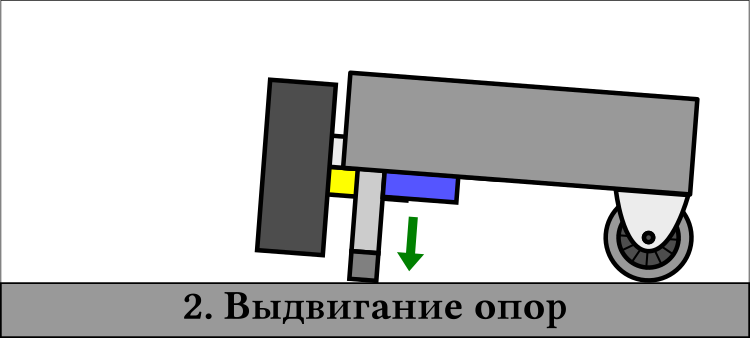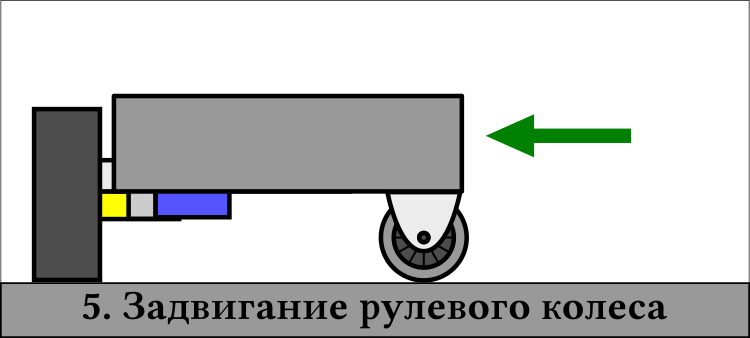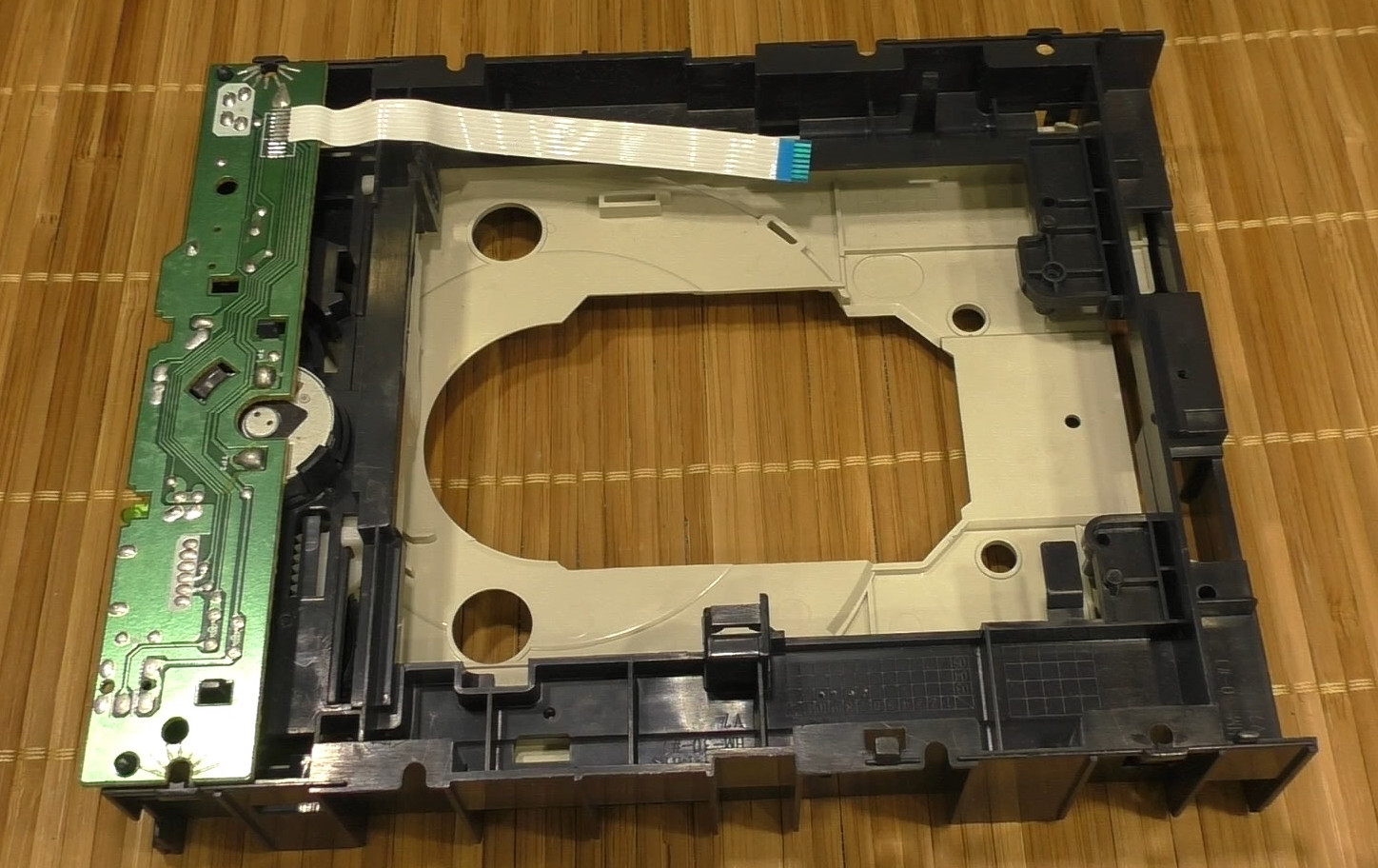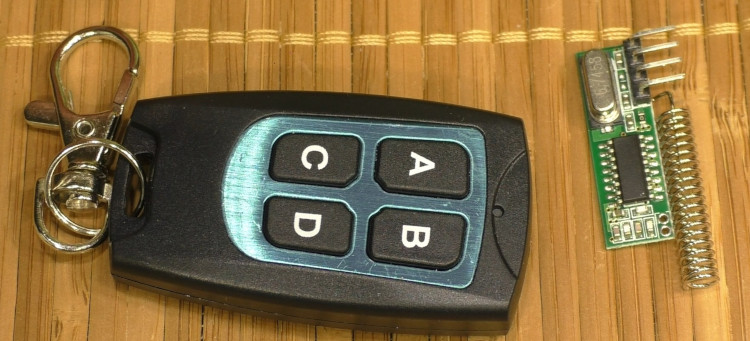Creeping cd drive

Hi, Habr. In this article I will talk about a simple controlled crawling robot made from an old CD-drive. I want to convey only an idea, not a specific design, so that everyone can make something similar of the available details if they wish. The article has a lot of light pictures and three gifs totaling 25 MB.
If someone likes to watch videos more, here is a video about this robot .
Many electronics enthusiasts think about what can be done from outdated CD drives in our time. The most common application is a laser engraver from the laser head of a DVD writer and a coordinate table of two movements from this head. Automatic doors are usually made from a sliding table for a disk (for example, for cats or hamsters). I made two toys from a pull-out table: a "useless car" and a crawling robot. I will not talk about a useless car, because it is very simple. Who cares, you can watch a video about her .
However, the idea of a crawling robot is also very simple. If someone is not familiar with the design of a CD drive, you can read about it on Wikipedia .
I'll start with a theoretical description. The figure below shows a crawling CD drive on the side. He has two freely rotating wheels at the back, called "support wheels". In front there is a “steering wheel” with its own engine. Below there are two extendable supports for raising the steering wheel.

In the following figure, the front view, however, it turned out to be little understood.

How this system creeps is also shown in the figures. So, there is an initial state when the sliding table from the CD and the supports are pushed in. From this position, the robot begins to move forward, backward and performs a turn.

To move forward, the supports first extend, thereby raising the steering wheel.

Then the CD table extends along with the steering wheel.

Further, the supports retract and the steering wheel lowers.

Now it remains to return to its original state by sliding the table for the CD.

In this case, the steering wheel clings to the floor surface, so the entire frame of the CD-drive is pulled to the steering wheel. Next, the cycle repeats.
To turn the robot in the initial state, the steering wheel motor is turned on, while the entire system begins to rotate 360 degrees around an axis located somewhere between the supporting wheels.
If you understand how this thing works, then it will not be difficult for you to imagine how the backward movement is performed.
Now a little about my implementation. I won’t tell in detail, since everything was done in a haphazard way, just for the sake of checking the idea’s working capacity. I used a simple CD-drive as a base, took out all the optics with a slide out of it, there was only a plastic frame with a sliding table, a motor and button-end switches for the table.

Attached furniture wheels as supporting wheels.

I bought the steering wheel separately somewhere on the Internet. He has a motor and a plastic gearbox.

Retractable supports made of plastic tubes, which are sold in bulk chips in the housing SO8. I attached a chair from the lighters to them, having previously removed the flint and spring from them, so that the chair could rotate freely. To extend the supports used two cheap servos. Everything is assembled mainly on hot-melt adhesive.

Electronics was made of what it was, so it is very not optimal. To control the motors of the CD table and steering wheel, a bridge circuit with transistors was used. This made it possible to change the direction of rotation. As logic - some kind of arduino board. To control the movement, he took a key fob and a receiver response circuit at a frequency of 434 MHz.

To power the motors, I connected three lithium-ion batteries in series without any protection, so I turned it on with caution, sometimes checking their charge. To power the digital part and the radio, I used a small cheap power bank giving out 5 V. The

batteries in the back are very handy, since the steering wheel greatly outweighs when moving forward.
The control program, when turned on, checks the end points of the CD drawer and restores the system to its original state. For control 4 buttons are used. When you press the "Forward" button, the forward movement begins. Stop and return to the initial state of the system occurs when you press any button on the remote control. When the “Back” button is pressed, it moves backward, also with a stop when any button is pressed. The Left and Right buttons work only in the initial state and only while they are pressed.
As a result, it turned out that only forward movement works normally. When moving backward, the center of gravity shifts greatly when the steering wheel is extended, so the supports cannot lift it normally. Need more powerful servos. Since the system always returns to its original state, movement is possible only with the “steps” determined by the length of the table for the CD, but this is a purely software limitation.
And finally, a few gifs.
Forward movement, side view, 6.8 MB

Movement forward, top view, 7.8 MB

Rotate, view from above, 6.3 MB

I think that the whole system can be simplified by making a control panel on a loop, and control the motors with buttons and switches. To control the servos you can make a simple generator on timers 555. Power can be made from ordinary batteries and place them in the remote control, reducing the weight of the robot. Such a remote control will allow you to control the robot completely manually.
Thank you all for your attention and good crafts to you.
Only registered users can participate in the survey. Please come in.
How do you like this robotics?
- 43.3% Very cool, I want more! 114
- 39.5% OK, sometimes it's interesting. 104
- 6% Too simple and not very interesting. 16
- 11% This is terrible. 29th
